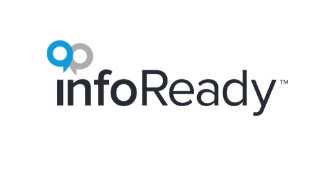We’re always looking for ways to make managing competitions even more efficient. That’s why we integrate with Pivot, a comprehensive web-based discovery tool that was already making it easier for universities to find grant opportunities. With the InfoReady and Pivot integration, adding opportunities to InfoReady is, quite literally, as simple as clicking a button.
Spend less time on data entry
We spoke with Richelle Weihe, Manager of the Proposal Development Unit at the Michigan Center for Integrative Research for Critical Care at the University of Michigan, who uses Pivot with InfoReady. Prior to using the integration, Weihe’s predecessor spent at least one full day a week searching for opportunities and entering all the information into a spreadsheet. The spreadsheet was then sent around to all the applicable members once a week, creating multiple versions... and headaches.
Once Weihe took over the job, she switched to using InfoReady with the Pivot integration and it has revolutionized her work. Now Weihe only spends one to two hours a week searching for opportunities and entering them into InfoReady — and that the bulk of that time is spent researching opportunities, rather than laboring over data entry. Once she identifies a good opportunity, it takes her “less than five minutes” to move the data into InfoReady. This frees her up to spend most of her time on what’s most important: working with faculty to develop their proposals..
Weihe’s advice on how to get the most out of Pivot and InfoReady:
1. Set up the weekly Pivot report so it can do the work for you.
Weihe spent some time determining what keywords turn up opportunities most suited for her center. Once she identified those keywords, she set up a weekly report so Pivot sends new opportunities for her keywords directly to her email. This allows her to spend less time combing through opportunities in the database, as she can quickly see which opportunities are new to her favorite keywords.
2. Focus on opportunity quality, not quantity.
Weihe typically only turns up around thirty opportunities per search, and of those, only one or two will actually be applicable to her center. Weihe says, though, that she would rather post one or two highly relevant opportunities a week than many semi-relevant ones because her members might start to tune out the opportunities if they aren’t seeing relevant ones. She also prioritizes opportunities with higher dollar amounts, as those can do more help for her center.
3. Use Pivot to diversify your donor portfolio.
Weihe says that while it’s easy to continue going back to the same sources her center is familiar with, she likes to use Pivot to help her find new donors and diversify U-M’s portfolio. Pivot is a comprehensive source of global funding and frequently puts new donor names in front of her that she otherwise wouldn’t have heard of. Rather than ignoring these opportunities, she likes to click into them and learn a bit more about the donor. If everything checks out, she moves the opportunity into InfoReady.
4. Check all opportunity information before sending it to InfoReady — and take notes.
Once Weihe has identified a good opportunity, she readies the information to send to InfoReady. She recommends just checking to make sure the information is all entered correctly. She uses the notes space to highlight any unusual details the opportunity may have and to offer recommendations for those looking to compete for the opportunity. These notes can be an innovative way to encourage her center’s members to engage with the opportunity.
Weihe says the InfoReady and Pivot integration has completely revolutionized her work. What could it do for you?




